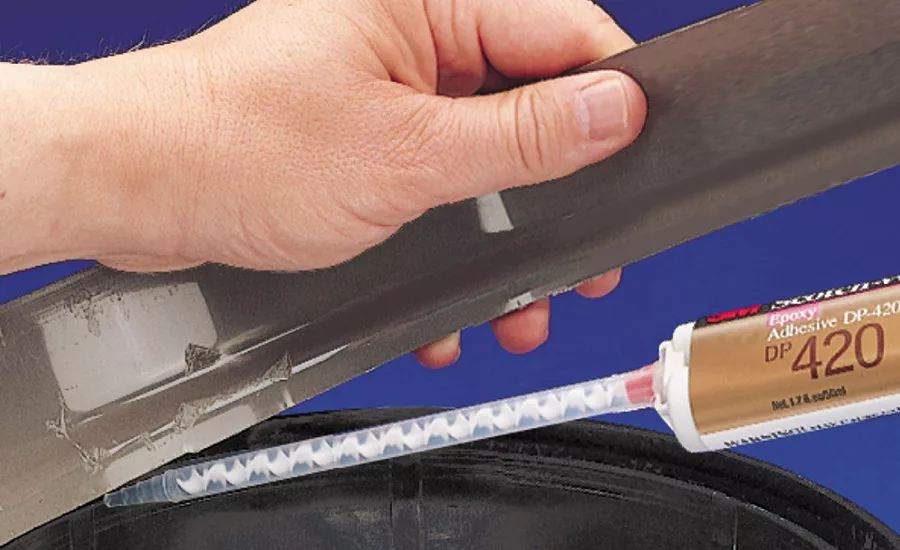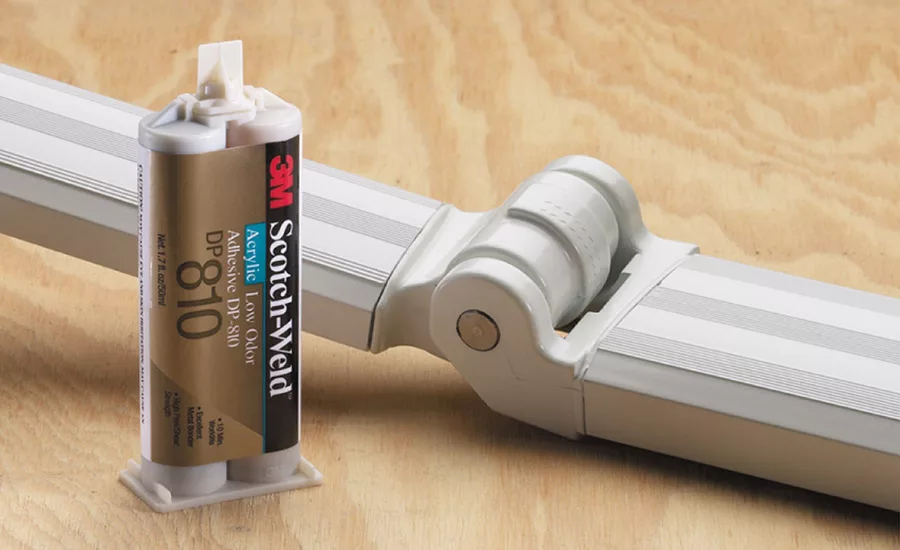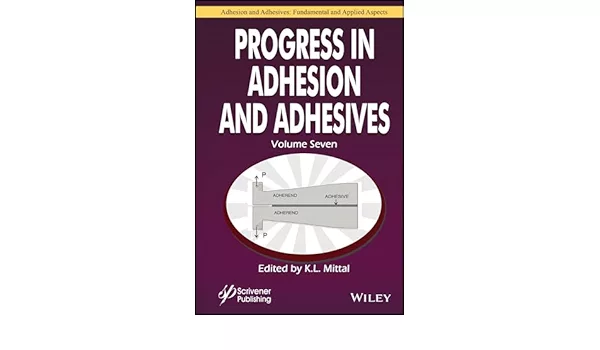Epoxy, Acrylic, and Urethane Structural Adhesives
Increasing alternatives to mechanical fastening are available.

3M Scotch-Weld™ epoxy adhesive DP-420 bonds and seals ABS components of a pump housing. Adhesive flexibility helps absorb vibration for a secure bond.

3M Scotch-Weld™ low-odor acrylic adhesive DP-810 requires minimal surface prep for binding metal hinges into awning frames, reaching handling strength in 10 min.
With ongoing advances in structural adhesive formulation, designers in every industry have increasing alternatives to mechanical fasteners for assembly of metal, composites, plastics, rubber, glass and more. With a wide choice of epoxies, acrylics and urethanes, engineers have the high cohesive strength and creep resistance to permanently bond high strength materials and potentially replace mechanical fastening in applications ranging from bicycle frames and disk drives to plastic fencing and refrigeration coils.
Beyond having load-bearing strength, structural adhesives offer other styling, performance and production improvements, including the following:
- Uniformly distribute stress over the entire bonded area
- Effectively bond dissimilar materials
- Maintain integrity of the assembled substrates
- Maximize fatigue resistance with adhesive flexibility
- Simultaneously bond and seal against the environment
- Frequently help reduce cost and increase production
If one or more of these six reasons are enough to consider eliminating mechanical fastening, you'll now want to consider the differences between the three resin families.
Epoxy
The largest family of structural adhesives, epoxies typically provide the highest strength and elevated temperature resistance of all structural adhesives. Pastes or films can be selected with a range of application options to help match the adhesive to a manufacturing process. For example, epoxy formulations are available to fit into an existing paint/bake cycle or into an ambient temperature multi-station operation.
Acrylic
Consider acrylic for the widest range of substrates, including hard-to-bond plastics and oily metals. Compared to epoxy and urethane, acrylic has the advantage of curing faster and bonding with high strength without the surface preparation needed for the other resins. Depending on formulation and substrate, shear strength reaches 4,200 psi. Peel strength reaches 35 piw.
Urethane
The same polyurethane resin found in many foam products and coatings is also found in a family of lower cost two-part structural adhesives. These urethane adhesives are durable and highly elastic for applications requiring energy absorption and flexibility between many dissimilar materials. Urethane adhesives compensate for contraction and expansion between such surfaces as concrete and metal. Overlap shear strength can reach 2,500 psi with 25 piw, but usually decreases at elevated temperature. Applications range from bonding large panels subject to flexing to repairing conveyor belts and concrete cracks. Open times are available from 15 seconds to 60 minutes, depending on formulation.
For more information on epoxy, acrylic, and urethane structural adhesives, visit www.3M.com/adhesives.
Looking for a reprint of this article?
From high-res PDFs to custom plaques, order your copy today!





